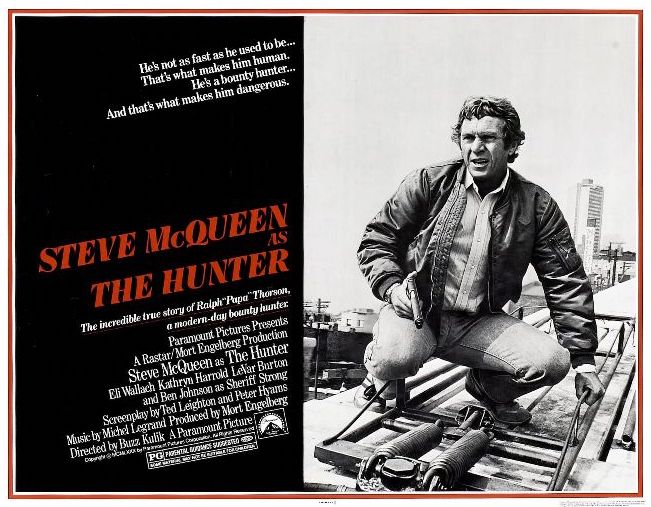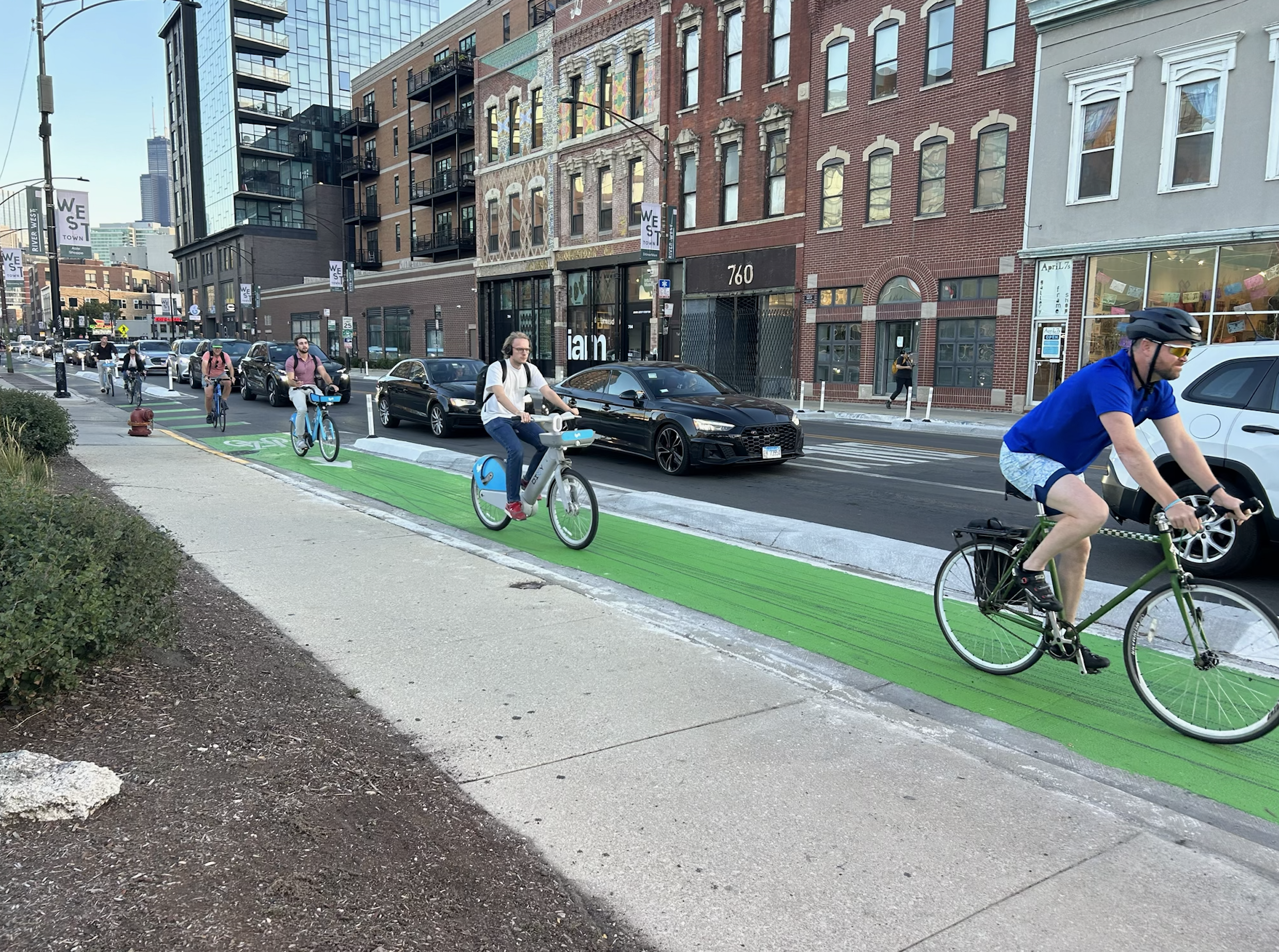[This piece previously ran in the Chicago Reader.]
In any movie set in our city, from the 1973 Paul Newman and Robert Redford caper The Sting to last year's Steve McQueen-directed heist film Widows, the elevated tracks, subways, and buses of the Chicago Transit Authority are likely to play a starring role.
"The CTA is an integral part of the Chicago, an important thread in the fabric of our city," said CTA spokesman Jon Kaplan. "Our ‘L’ is an iconic image that is instantly recognizable worldwide. That is why it remains such a popular choice for movies, TV programs and commercials shot in Chicago."
"The 'L' system is just so beautiful and picturesque," seconded local tour guide and history lecturer Michael Corcoran told me last week. "The Loop elevated is especially cool—it's like this little monorail through the city. It's this iconic piece of infrastructure that just says 'Chicago.'"
Along with film historian Arnie Bernstein, Corcoran coauthored the latest edition of Hollywood on Lake Michigan: 100+ Years of Chicago and the Movies (Chicago Review Press 2013), an account of our city's illustrious cinematic past and present.
Corcoran walked me through some of his favorite flicks that showcase the CTA. He got the inside scoop on several of the movies from Bob Janz, a retired transit worker who spent 17 years, from the late 70s to the early 90s, orchestrating the use of CTA rolling stock and facilities for numerous film and TV productions.

The Hunter (1980)
Corcoran says this thriller, the last actor Steve McQueen made before dying of cancer a few months after its release, isn't one of his best. But it's well known in Chicago for a scene where the dangerous criminal that McQueen, a bounty hunter, is pursuing drives through a guardrail of the Marina City parking garage and plunges into the Chicago River.
But that's only the grand finale to a dramatic chase that starts with McQueen running after the fugitive through the streets of Uptown and onto a Red Line train at the Wilson station. McQueen, doing his own stunt, winds up on the roof of a railcar with the bad guy shooting at him as the train heads downtown and into the subway. Janz spent six weeks working with the film crew on the scene, which involved placing a camera truck on a flatbed car and running it alongside the train.

The Blues Brothers (1980)
When Jake Blues (John Belushi) arrives at his brother's room in the old Stag Hotel SRO on Van Buren Street, right next to the Loop elevated tracks, he asks, "How often does the train go by?" "So often that you won't notice it," Elwood (Dan Aykroyd) replies, and then, absurdly, trains rumble by every few seconds. Corcoran said the film crew rented two 'L' railcars and just ran the same cars back and forth in front of the window like a toy train set. If you look closely next time, you'll notice that there are no passengers in the cars.

Risky Business (1983)
This coming-of-age comedy features what may be the hottest love scene ever filmed on public transportation, between Rebecca De Mornay and then-off-screen-boyfriend Tom Cruise. I asked Corcoran whether this racy sequence raised any concerns from CTA brass about inspiring copycat Metro-sexuals. "The upper-echelon folks didn't really care," he said. "The biggest thing the CTA is concerned with is that people don't get the impression that they're allowing Hollywood to do anything unsafe."
However, Janz told Corcoran the scene was "a huge pain in the butt" because it used a large portion of the CTA's elevated and subway system. This included a shot where the lovers' train passes through a tunnel at a climactic moment.

Code of Silence (1985)
Corcoran noted that this Chuck Norris action vehicle has a theme of bad Chicago cops protecting each other, which could easily be ripped from today's headlines. As in The Hunter, there's a scene where the hero ends up on the roof of a moving 'L' train, this time on the Brown Line.
"Chuck's starting to lay an ass-whoopin' on the bad guy when the guy tries to escape by jumping into the river as the train crosses the Wells Street bridge, and Chuck dives in after him," Corcoran said. Janz did such a good job of smoothly driving the train during the filming of this tricky fight scene that afterwards one of the stuntmen hugged him and cried, "You've got golden fingers."

Running Scared (1986)
This cop buddy film featured the most complicated CTA scene that Janz worked on. Detectives Gregory Hines and Billy Crystal are in a taxi chasing drug dealer Jimmy Smits in his limousine when the limo driver veers onto the Yellow Line tracks in Skokie and the cab follows. Incongruously, the chase suddenly switches to the Loop elevated tracks, ending with the limo smashing into an oncoming train and flipping over.
The film crew had purchased the two railcars at the front of the train and gutted them, and Janz operated the train from the third car, relying on a cue from the director since he couldn't see in front of him. The limo and cab, which had been lifted onto the elevated tracks with a crane, were actually driven right on the tracks with no special gear under the chassis.

The Fugitive (1993)
This thriller from Code of Silence director and Chicago native Andrew Davis has two key CTA-related scenes. In one scene, FBI agents are trying to determine the location of Dr. Richard Kimble (Harrison Ford), based on the elevated train sound in the background of his pay phone call to his lawyer. The announcement "Next stop, Merchandise Mart" reveals to the feds that Kimble is in Chicago, but that doesn't actually make sense, because CTA stop announcements are only audible within the railcars.
In another scene, Ford's Kimble subdues the murderous one-armed man inside a Red Line car and handcuffs him to a pole. We hear an announcement that the next stop is the (fictional) Balbo station. The voiceover was done by Working author Studs Terkel. Corcoran noted, "That was a little Chicago in-joke by Davis."

Stranger Than Fiction (2006)
Corcoran called this surreal, star-studded comedy-drama, featuring Will Ferrell, Maggie Gyllenhaal, Dustin Hoffman, Queen Latifah, and Emma Thompson, "probably the best movie ever shot in Chicago." At one point there's a scene where Ferrell's Harold Crick is sitting within the moving accordion section of an articulated CTA bus and Gyllenhaal, his love interest who's pissed off at him, is sitting nearby in a nonmoving seat. The bus keeps turning so that, awkwardly, he's repeatedly positioned in her face. Near the end of the flick, Crick gets run over while pushing a child out of the path of a CTA bus. Director Marc Forster put out a casting call for a real-life bus operator to pilot the vehicle and hired driver Denise Hughes. She's done multiple acting roles since then, but as of a few years ago she was still regularly driving the Chicago Avenue route, so keep an eye out for her behind the wheel of the #66.






